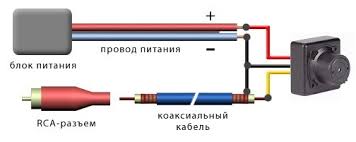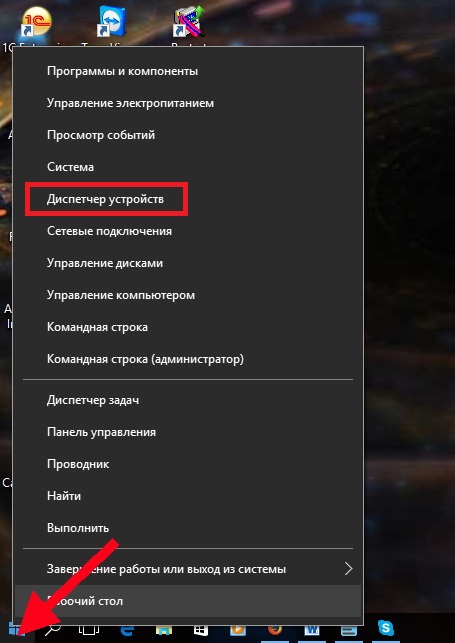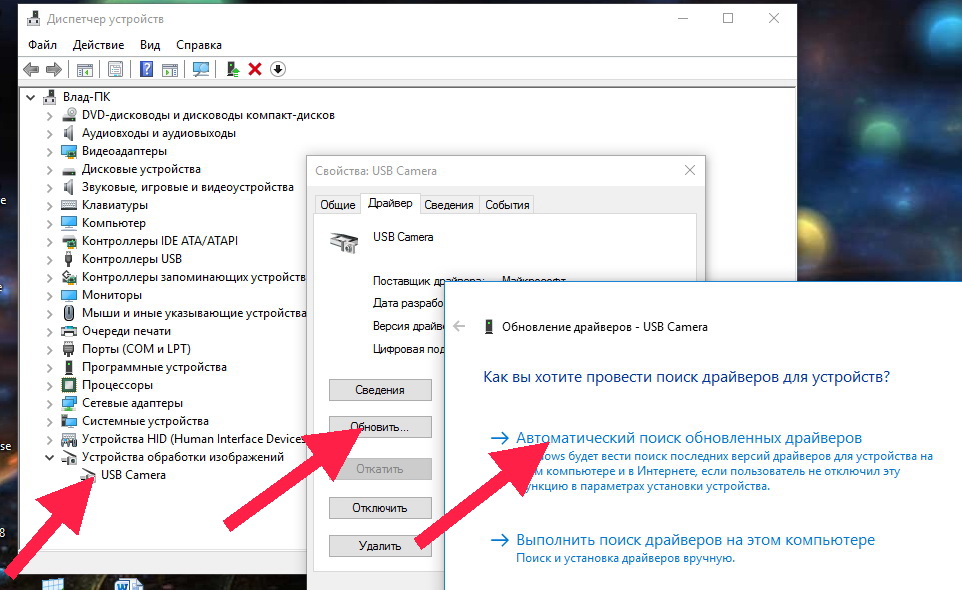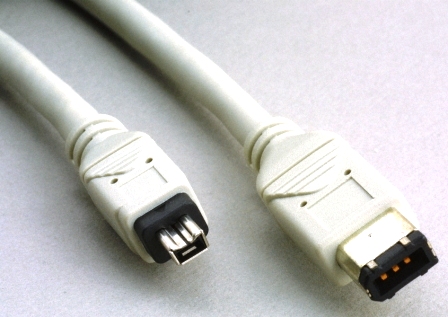How to connect to a usb webcam. How to connect an analog video camera to a computer
Some digital video cameras can connect directly to a computer using a USB or FireWire cable. However, in many cases you will have to make special arrangements to connect this device. This will happen if you have an old camcorder or do not have compatible ports. What to do?
Instructions
Instructions
Organizing video surveillance of a site requires not only a recording device - a camera, but also a device on which the image from it will be viewed. Viewing video from a camera in real time can be organized without a computer, using monitors or televisions; this approach significantly limits the functionality of the surveillance system and does not make it possible to save and review videos. Only connecting the camera to a computer makes the video surveillance system truly effective.
Types of cameras
Depending on the type of camera, the methods for connecting it to your computer may differ.
Digital IP Camera
 Digital IP camera connects to computer directly via LAN network input(wired Internet connection port) If a router or switch is used in the house, the connection is made to it. After connecting the IP camera, find the video device’s own IP address in the instructions. You can see the image from the camera by opening a browser and entering the IP of the connected device in it.
Digital IP camera connects to computer directly via LAN network input(wired Internet connection port) If a router or switch is used in the house, the connection is made to it. After connecting the IP camera, find the video device’s own IP address in the instructions. You can see the image from the camera by opening a browser and entering the IP of the connected device in it.
To change your own IP camera address, you should use special programs. Typically, software for the camera is supplied with it or downloaded from the camera manufacturer's website. To save changes to the IP, you need to enter the password for the camera, this password is also written in the instructions.
Sometimes, using official programs, you can view the image without using a browser, and through such programs you can record video or organize motion detection.
In order to organize a system of several surveillance cameras, you will need a switch or router. You need to connect cameras to different ports, and in the router settings you need to specify a unique numeric value for the port. Then accessing the selected camera in the browser will look like in the following way: "(ip address):(switch port value)".
Analog cameras
 It is not possible to connect an analog camera directly to a computer. One of the ways to connect is to purchase and installing an analog board in a computer, which converts the analog signal from the camera “tulip” into a digital one. The method of additionally installing an analog card (video capture card) does not work if you use a laptop instead of a computer. One video capture card has several connectors and you can connect more than one camera (the number of connectors depends on the card). To program further work with the camera, you should use the software that comes with the video server.
It is not possible to connect an analog camera directly to a computer. One of the ways to connect is to purchase and installing an analog board in a computer, which converts the analog signal from the camera “tulip” into a digital one. The method of additionally installing an analog card (video capture card) does not work if you use a laptop instead of a computer. One video capture card has several connectors and you can connect more than one camera (the number of connectors depends on the card). To program further work with the camera, you should use the software that comes with the video server.
A universal connection method is the use of a video server - an autonomous signal converter from the camera. The video server has a BNC input and LAN output, further connection of an analog camera is carried out in the same way as an IP-digital one. The method is inconvenient because each analog camera needs its own video server.
How a budget option To connect an analog camera, you can use a USB video signal converter, the device is inserted into the USB port of a computer or laptop, and further control of the camera is carried out with a special program.
Wireless cameras
 Wireless cameras are the same as IP cameras, but they transmit images to a computer via the Wi-Fi protocol. The main disadvantage of the camera is small maximum length The distance between the camera and the computer is no more than 100 meters in open areas. Such cameras are quite expensive and require powerful and stable coverage to operate; it is not recommended to install them far from a Wi-Fi access point.
Wireless cameras are the same as IP cameras, but they transmit images to a computer via the Wi-Fi protocol. The main disadvantage of the camera is small maximum length The distance between the camera and the computer is no more than 100 meters in open areas. Such cameras are quite expensive and require powerful and stable coverage to operate; it is not recommended to install them far from a Wi-Fi access point.
Connecting the camera requires a computer or laptop and the ability to work with Wi-Fi. Set up video surveillance using wireless cameras easy, no need optional equipment. Also, Wi-Fi cameras if necessary, they allow you to receive an image from it on any device connected to the local Internet (third-party laptop, tablet, phone).
To protect information from third parties, an encryption system is used; the signal is decrypted using branded programs from manufacturers.
Accessories for connecting the camera
To connect an IP camera you only need Enternet network cable and required port (connector) on the computer. Connecting a computer to a global network is not at all necessary, but the Internet is necessary if the video surveillance network is planned to be non-local (that is, such that the image from the camera is accessible via the Internet from any device).

To receive images from an analog camera you will need coaxial cable(the maximum possible cable length for image transmission without loss of quality is up to 300 meters) and an analog board in a computer or any other converting device.
To summarize, we can say that IP cameras are the easiest to connect and further use. Analogue cameras, despite the fact that they are cheaper and capable of producing higher quality images, are more complex to connect and configure and require additional equipment to operate.
Wireless standalone Wi-Fi cameras are easy to set up and connect to a computer, but their main disadvantages are their inability to work at a remote distance from the Wi-Fi source or far from the receiver (from the computer).
Diversity today security systems represented by a wide range on the market. There is a huge number of different fire and security alarms and sensors, however, a better and more reliable method than protecting an object using video monitoring has not yet been invented. To organize such a system, you just need to connect a video surveillance camera to a computer, and then everything that happens at the controlled facility will be displayed in real time.
What methods of connecting video cameras are there?
Of course, before installing CCTV cameras at any facility, it is necessary to decide on the method of data transmission. There are two options:
- Data transmission via wire;
- Wireless method of transmitting information.
The wired method, although considered outdated, remains the most common, since the connected device of this type is usually cheaper. The obvious disadvantage of this connection option is that the installation complexity increases, since it is necessary to lay the wire. Such a device can be connected via USB to a computer, a special video card, or using a TV tuner. One of the most common and inexpensive ways A wired connection is considered to be a connection between mechanisms via a USB converter. It fits both desktop computers and laptops.
The USB converter looks similar to a flash drive, but on the reverse side there are sockets for connecting a video camera cable. However, with this connection option, the resulting picture will be of low quality.
A special video card is installed directly into the computer, and the number of connected cameras increases to approximately 15. That is, using this card you can make full-fledged video surveillance for a small object. An absolute plus wired connection of surveillance through an installed card in the computer is that the software attached to it will allow you to transfer the resulting image to worldwide network, record if a motion sensor is triggered, and much more. Also, wired surveillance devices can be connected to a computer via a TV tuner. It connects to the monitor and, having received a signal from the camera, processes it and transmits the picture. At the same time, the picture quality is slightly higher than when data is transferred via USB.
The second method of data transmission is wireless. This CCTV camera connection is used when they want to get rid of large quantity wires or if their installation is impossible for some reason. Indeed, it is quickly installed, since no special work is required for laying the cable. But wireless video cameras are more expensive than wired ones. In order for such a system to work, you need a connecting link between the computer and the camera, called a router. The router’s task is to transfer data to a computer, which, using installed software, will process the received data, converting it into an image. Connecting such surveillance systems takes place in several stages:
- Usually, the video camera device comes with a special program that needs to be installed on the computer;
- After this, you should connect the router to the desired computer, which receives the data and converts it into an image;
- The last stage is to establish a connection between the router and the video surveillance device to receive data.
Video shows video surveillance connection:
Additional equipment when connecting CCTV cameras to a computer
Of course, by connecting a set of video cameras to a computer, you can save cash, since there is no need to spend money on DVRs and other necessary mechanisms. But if more than ten security cameras are installed, it will not be superfluous to purchase some additional elements. Yes, source uninterruptible power supply will be able to help continue monitoring the object in case of absence electrical energy. This element is very important, since attackers, knowing about the presence of video surveillance, will want to turn off the power to the cameras in order to remain unnoticed.
In addition, if wired cameras are used, then it is imperative to hide the wires in the walls or using special boxes where the cable is laid.
You can try to install and configure a video surveillance system yourself, saving money on installation work. The device connection diagram will help with this. But it is quite difficult to install the equipment yourself reliably and without failures in subsequent work. Therefore, the help of a specialist will be necessary, because even the little things are important when installing mechanisms responsible for safety.
Video about CCTV cameras:
With increased access to high-speed Internet networks, instant messengers with video and audio communication capabilities have become very popular. Free programs like Skype, Imo, Viber, Jitsi, Google Hangouts, etc. allow you to connect relatives, acquaintances, friends located on opposite sides globe almost instantly and with sufficient quality.
The Internet is also littered with applications for video recording, motion detection, video surveillance systems, and image streaming. All these programs have one element in common - a video camera. The most convenient and cheapest type of cameras is WEB cameras.
If you do not quite understand how to connect a webcam to a computer, then this information will be useful for you.
Connecting the camera
The device connects to the port USB via a wired or wireless interface. For it to work, just insert the cable or receiver connector into the corresponding socket on the computer case.
Please note that cameras can connect to a computer using USB 2.0 or USB 3.0 protocols. This means that a USB 2.0 gadget will work with any protocol, and USB 3.0 only with the appropriate one.
If the motherboard does not support USB 3.0, then connecting a camera with the 3.0 protocol will not be possible.
If everything fits together for you, you need to install the appropriate driver.
Driver installation
Usually the system independently determines the device type and establishes a support program. As evidenced by the notification in the lower right corner. Sometimes the software is missing, then you should use the disk that came with the camera. As a rule, no difficulties arise at this stage. Follow the prompts and the driver will be installed safely.
If there is no disk, then you will have to look for the driver yourself. To do this you need to go to device Manager. Windows 10 allows you to do this in a simplified way. Just right-click on the Microsoft icon in the lower left corner of the screen and select the appropriate menu item.

Open Device Manager, and in the window that opens, select Imaging devices - USB camera. At this point, right-click on the inscription Update. And choose automatic update. The system will automatically detect the driver, install it, and connect the device.

It happens that the driver is not automatically detected, how to connect the webcam to the computer in this case? You need to look for a program on manufacturer's website or on the resource driver.ru by model.
Settings
Once the driver is installed, you can configure the gadget. To do this, it can be installed focusing ring, which should be adjusted. The device also has a mount with which you can set its position relative to the object being photographed. If installed on your computer Skype, then the image is adjusted in this program. Open the settings window: Tools - Settings. Video settings.

Now you can set the position of the device, adjust the focus and adjust the video signal parameters.

If Skype is not installed and you do not want to install it, then use any of the applications that support web cameras, for example, Webcam Surveyor, AbelCam, Active WebCam, etc.
Video on the topic
Various gadgets have become a part of our lives. The video camera is no exception. Almost every family has this device. Someone will prefer budget model for filming family celebrations, while others might want to buy an action camera for exciting leisure time. For both of them, the main thing is the footage, because you want to view the result, send it, or perform some other action. If you can view it directly on the display of a video camera (a dubious pleasure, given the diagonal of most digital devices), then you can perform other actions only on a computer.
First you need to know how to connect a video camera. To connect to a TV or VCR, the camcorder has analog ports for video and audio. Their colors match the colors of the plugs on the cord (RCA or “tulip” - yellow, white, red). All that remains is to connect the cord to the appropriate connectors on the TV or VCR. Everything is simple here.
A digital port (USB, HDMI, FireWire 1394 or IEEE 1394) is used to transmit the signal to a computer. The computer does not accept an analog signal. It must be converted to digital. But today the main place in the market is occupied by digital video cameras. They record straight to a compatible format, so no conversion is necessary. You can immediately transfer already recorded media files.
Both the computer and the camcorder have a FireWire 1394 port. On the computer, this port is located on the rear panel. Before connecting the camcorder, you need to find out whether it is on motherboard. You may need to purchase and install an appropriate adapter. If you need to connect the camera to a laptop, you may need to buy an IEEE 1394 controller. After solving these issues, you can take the connecting cable and connect the device.


After turning on the already connected video camera, the computer will immediately detect the new device and offer options for action. Most often, you will first need to install drivers for your digital video camera. They are located on the disk that is usually included with the device. On the same disk there will be necessary programs for a video camera. Modern OS can identify devices themselves and search for the necessary drivers on the Internet. This will greatly simplify the task for a novice user.
After the system has correctly identified digital video camera, you need to check how the video signal is received. An icon corresponding to the video camera appears in the My Computer window. Double-click on it to open it and turn on the camera for playback. If all is well, an image will appear on the screen. Please note that in this case the sound will not be played, even if there are speakers.
That's all, actually. The problem of how to connect a video camera has been solved. What to do next is up to the user, that is, you, dear readers!
